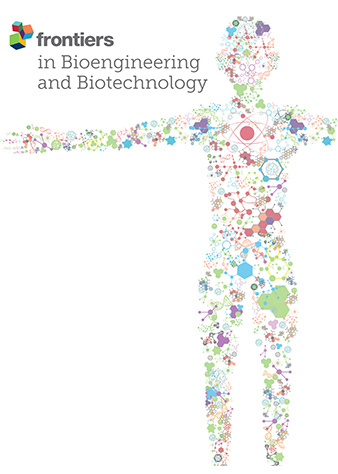A simple cell proliferation assay and the inflammatory protein content show significant differences in human plasmas from young and old subjects
IF 4.3
3区 工程技术
Q1 BIOTECHNOLOGY & APPLIED MICROBIOLOGY
引用次数: 0
Abstract
Some studies showed a “rejuvenating” effect of exposing aging tissues to a young environment. In mouse heterochronic parabiosis experiments, in response to young organisms, old animals lived longer than isochrony old age-matched conjoint animals. Comparable “rejuvenating” effects were obtained by injecting young plasma in old mice. This raised great hopes of slowing down the senescence process in humans by the injection of young plasma, as well as to prevent or cure age-related diseases. Some clinical trials are currently being performed or were recently completed. However, these studies are small and of limited duration, and we still lack convincing evidence to support the effectiveness of young plasma injection. It is urgent to perform additional investigations, including the development of an assay to measure the cell proliferation induction capability of different human plasmas, before one can seriously think of a large-scale treatment of humans. We adopted a simple method to measure the potential of different plasmas in supporting cell line proliferation, regardless of the co-presence of a platelet lysate. By comparing plasmas from young and old subjects, we observed a decreased activity in plasmas from old individuals. The young plasma effect may be attributed to specific proteins and growth factors more abundant in younger individuals that could decrease with age. Alternatively, or at the same time, the reduced cell proliferation support could be due to inhibitors present in the old plasma. Studying the different protein content of young and old plasmas was out of the scope of this article. Such differences should be adequately investigated by proteomics using many samples. However, a preliminary study of the different protein content of young and old plasmas was part of the assay validation using a commercially available cytokine array for parallel determination of the relative levels of 105 selected human proteins. We could show the existence of specific differences between young and old plasmas and that plasmas from old individuals presented a higher concentration of “inflammatory” proteins.一种简单的细胞增殖测定和炎症蛋白含量显示,年轻人和老年人的人体血浆存在显著差异
一些研究表明,将衰老的组织暴露在年轻的环境中具有 "返老还童 "的效果。在老龄小鼠体内注射年轻血浆也获得了类似的 "返老还童 "效果。这使人们对通过注射年轻血浆来延缓人类衰老过程,以及预防或治疗与年龄有关的疾病产生了极大的希望。目前,一些临床试验正在进行或刚刚完成。然而,这些研究规模较小,持续时间有限,我们仍然缺乏令人信服的证据来证明注射年轻血浆的有效性。当务之急是进行更多的研究,包括开发一种测定方法来测量不同人体血浆的细胞增殖诱导能力,然后才能认真考虑对人体进行大规模治疗。我们采用了一种简单的方法来测量不同血浆在支持细胞系增殖方面的潜力,而不管血小板裂解物是否同时存在。通过比较年轻人和老年人的血浆,我们观察到老年人的血浆活性降低。年轻血浆效应可能是由于年轻人体内的特定蛋白质和生长因子较多,而这些蛋白质和生长因子会随着年龄的增长而减少。另外,或同时,细胞增殖支持能力下降可能是由于老年血浆中存在抑制剂。研究年轻人和老年人血浆中不同的蛋白质含量不在本文的研究范围之内。这种差异应通过使用大量样本的蛋白质组学进行充分研究。不过,对年轻血浆和年老血浆中不同蛋白质含量的初步研究是使用市售细胞因子阵列进行检测验证的一部分,该阵列可平行测定 105 种选定人类蛋白质的相对水平。结果表明,年轻血浆和年老血浆之间存在特定的差异,而且年老血浆中 "炎症 "蛋白的浓度更高。
本文章由计算机程序翻译,如有差异,请以英文原文为准。
求助全文
约1分钟内获得全文
求助全文
来源期刊

Frontiers in Bioengineering and Biotechnology
Chemical Engineering-Bioengineering
CiteScore
8.30
自引率
5.30%
发文量
2270
审稿时长
12 weeks
期刊介绍:
The translation of new discoveries in medicine to clinical routine has never been easy. During the second half of the last century, thanks to the progress in chemistry, biochemistry and pharmacology, we have seen the development and the application of a large number of drugs and devices aimed at the treatment of symptoms, blocking unwanted pathways and, in the case of infectious diseases, fighting the micro-organisms responsible. However, we are facing, today, a dramatic change in the therapeutic approach to pathologies and diseases. Indeed, the challenge of the present and the next decade is to fully restore the physiological status of the diseased organism and to completely regenerate tissue and organs when they are so seriously affected that treatments cannot be limited to the repression of symptoms or to the repair of damage. This is being made possible thanks to the major developments made in basic cell and molecular biology, including stem cell science, growth factor delivery, gene isolation and transfection, the advances in bioengineering and nanotechnology, including development of new biomaterials, biofabrication technologies and use of bioreactors, and the big improvements in diagnostic tools and imaging of cells, tissues and organs.
In today`s world, an enhancement of communication between multidisciplinary experts, together with the promotion of joint projects and close collaborations among scientists, engineers, industry people, regulatory agencies and physicians are absolute requirements for the success of any attempt to develop and clinically apply a new biological therapy or an innovative device involving the collective use of biomaterials, cells and/or bioactive molecules. “Frontiers in Bioengineering and Biotechnology” aspires to be a forum for all people involved in the process by bridging the gap too often existing between a discovery in the basic sciences and its clinical application.
 求助内容:
求助内容: 应助结果提醒方式:
应助结果提醒方式:


